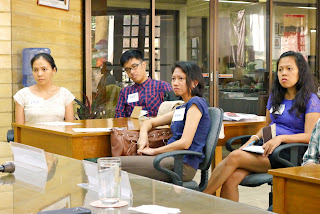The Principle of Status Quo Post Bellum and the Legal Resolution of the Territorial Dispute between China and Japan over the Senkaku/Diaoyu Islands
A Public Lecture by Melissa H. Loja
9 July 2015 (Thursday), 9:00 am - 11:00 am
Third World Studies Center Conference Area, Lower Ground Floor,
Palma Hall, UP Diliman, Quezon City
ABOUT THE LECTURE
The dispute between China and Japan over the Senkaku/Diaoyu Islands often is described as the most intractable. This is because Japan is in de facto and de jure possession of the islands by virtue of its residual sovereignty. Japan’s residual sovereignty is recognized under the San Francisco Peace Treaty (peace treaty) and Okinawa Reversion Treaty (reversion treaty). The opposability of these treaties is denied by China which was not a party to them. China has interposed its own right to possession based on historic title.
Ultimately, the dispute revolves around the question of whether Japan’s possession has a legal basis which is opposable to China. A preliminary yet equally important question is whether this legal basis is to be ascertained from conditions existing ante bellum or post bellum. Most articles go around these questions by focusing on which between China and Japan has the longest historic title and the oldest map. Such approach presumes that historic title is dispositive of the dispute. However, the settled ruling of international courts and tribunals is that historic title which is rooted in non-Western normative systems generally is a weak source of territorial rights, and that ancient maps are neither source nor evidence of such rights.
This lecture applies the principle of status quo post bellum. Under this principle termination of war through the simple cessation of armed hostilities signifies a tacit recognition by the parties that their relative legal positions constitute the status quo post bellum or point of reference of their future international relations. As it is based on agreement, the status quo post bellum binds the parties until it is altered by a subsequent agreement such as a peace treaty. It continues to bind those parties which do not ratify the peace treaty. The rationale behind the continuing binding force of the status quo post bellum is that its existence is an objective fact which produces legal effects, especially on third states. No party is permitted to negate these legal effects merely by refusing to ratify the peace treaty.
In the context of the dispute between China and Japan over the Senkaku/Diaoyu Islands, primary and archival records provide a snapshot of the territorial situation during the period from the cessation of armed hostilities on 2 September 1945 up to the coming into force of the peace treaty on 28 April 1952. This snapshot reveals a status quo post bellum which is characterized by the following:
On the one hand, the Allied Powers, specifically the United States as the occupying force, openly and consistently acted as though 1) the Senkaku/Diaoyu Islands are a group of minor islands appertaining to the Ryukyus or Nansei Shoto rather than to Formosa (Taiwan); 2) the islands are subject to the residual sovereignty of Japan; and 3) the islands are not claimed as territory by China or any other power. On the part of Japan, it sought the substitution of the term “Ryukyu Islands” in the draft of Article 3 of the San Francisco Peace Treaty with the phrase “Nansei Shoto south of 29° north latitude”. In effect, Japan sought to broaden the area under its residual sovereignty to include the Senkaku/Diaoyu Islands. On the other hand, China did not claim the islands or consider them covered by its claim to Formosa. China did not object to the conduct of the United States and other Allied Powers of attributing the islands to the Nansei Shoto and of recognizing the residual sovereignty of Japan.
In sum, underlying the status quo post bellum was an agreement that the Senkaku/Diaoyu Islands are minor islands appertaining to the Nansei Shoto over which Japan has residual sovereignty. This agreement is a legal basis of Japan’s possession of the islands which is opposable to China.
ABOUT THE SPEAKER
Melissa H. Loja is a PhD candidate in the Faculty of Law, University of Hong Kong where she also obtained her LLM. She clerked for the Philippine Supreme Court for a number of years.
RESOURCE LINKS
Playlist of Video Documentation of the Lecture
Burkina Faso v. Mali
Eritrea v. Yemen
Qatar v. Bahrain
Copy of TWSC presentation (2014)
Copy of TWSC presentation (2015)
RESOURCE LINKS
Playlist of Video Documentation of the Lecture
Burkina Faso v. Mali
Eritrea v. Yemen
Qatar v. Bahrain
Copy of TWSC presentation (2014)
Copy of TWSC presentation (2015)



























































































